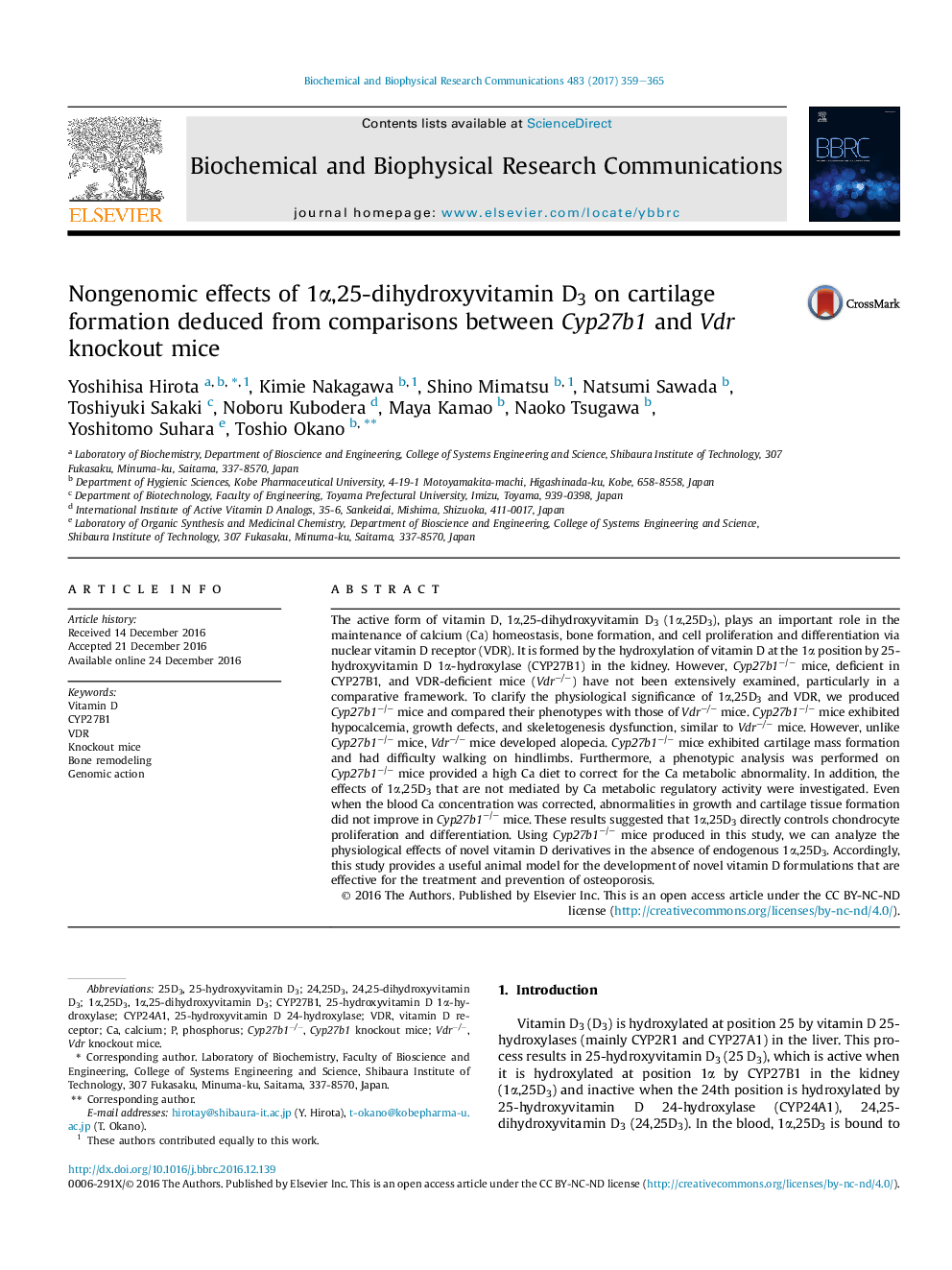| Article ID | Journal | Published Year | Pages | File Type |
|---|---|---|---|---|
| 5505602 | Biochemical and Biophysical Research Communications | 2017 | 7 Pages |
•We produced Cyp27b1−/− mice and analyzed their phenotypes.•Vdr−/− mice exhibited alopecia and Cyp27b1−/− mice exhibited cartilage dysplasia.•Maintenance of the hair cycle is associated with 25D3 via Vdr.•1α,25D3 controls chondrocyte proliferation and differentiation independent of Vdr.
The active form of vitamin D, 1α,25-dihydroxyvitamin D3 (1α,25D3), plays an important role in the maintenance of calcium (Ca) homeostasis, bone formation, and cell proliferation and differentiation via nuclear vitamin D receptor (VDR). It is formed by the hydroxylation of vitamin D at the 1α position by 25-hydroxyvitamin D 1α-hydroxylase (CYP27B1) in the kidney. However, Cyp27b1−/− mice, deficient in CYP27B1, and VDR-deficient mice (Vdr−/−) have not been extensively examined, particularly in a comparative framework. To clarify the physiological significance of 1α,25D3 and VDR, we produced Cyp27b1−/− mice and compared their phenotypes with those of Vdr−/− mice. Cyp27b1−/− mice exhibited hypocalcemia, growth defects, and skeletogenesis dysfunction, similar to Vdr−/− mice. However, unlike Cyp27b1−/− mice, Vdr−/− mice developed alopecia. Cyp27b1−/− mice exhibited cartilage mass formation and had difficulty walking on hindlimbs. Furthermore, a phenotypic analysis was performed on Cyp27b1−/− mice provided a high Ca diet to correct for the Ca metabolic abnormality. In addition, the effects of 1α,25D3 that are not mediated by Ca metabolic regulatory activity were investigated. Even when the blood Ca concentration was corrected, abnormalities in growth and cartilage tissue formation did not improve in Cyp27b1−/− mice. These results suggested that 1α,25D3 directly controls chondrocyte proliferation and differentiation. Using Cyp27b1−/− mice produced in this study, we can analyze the physiological effects of novel vitamin D derivatives in the absence of endogenous 1α,25D3. Accordingly, this study provides a useful animal model for the development of novel vitamin D formulations that are effective for the treatment and prevention of osteoporosis.
Graphical abstractFigure optionsDownload full-size imageDownload high-quality image (268 K)Download as PowerPoint slide
